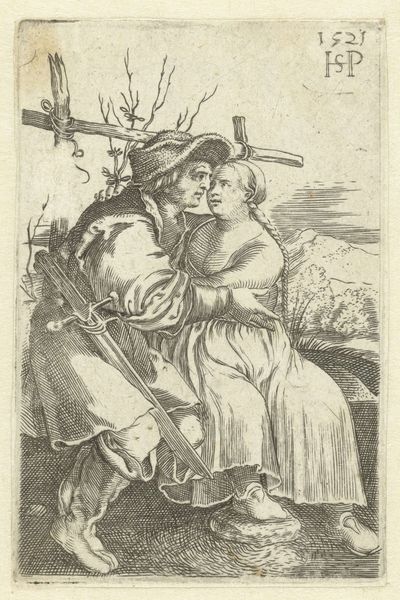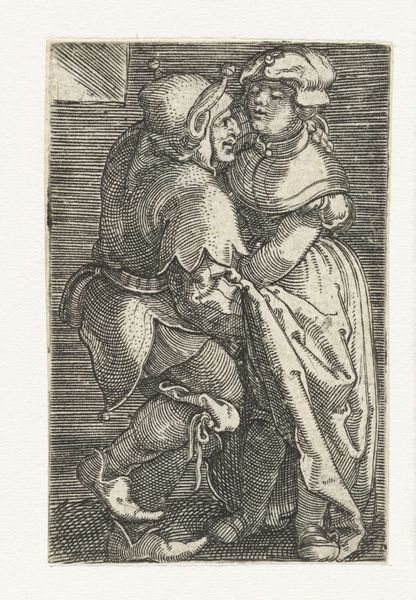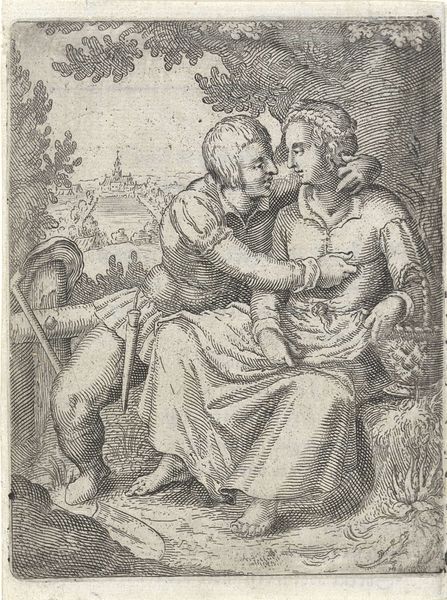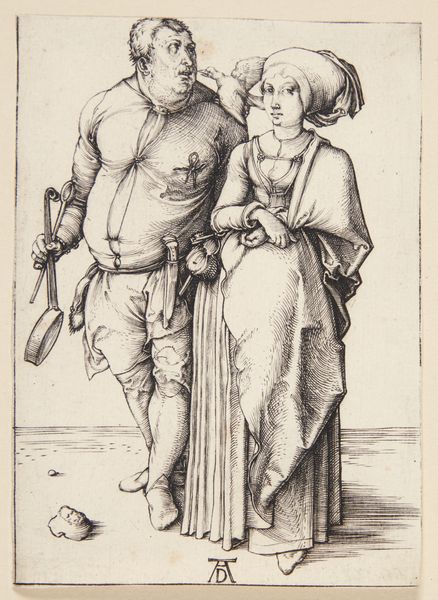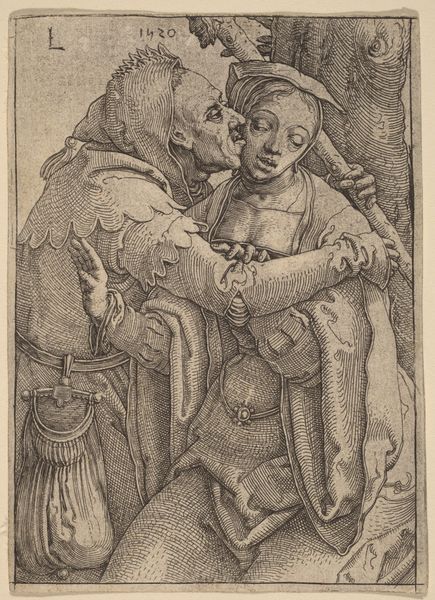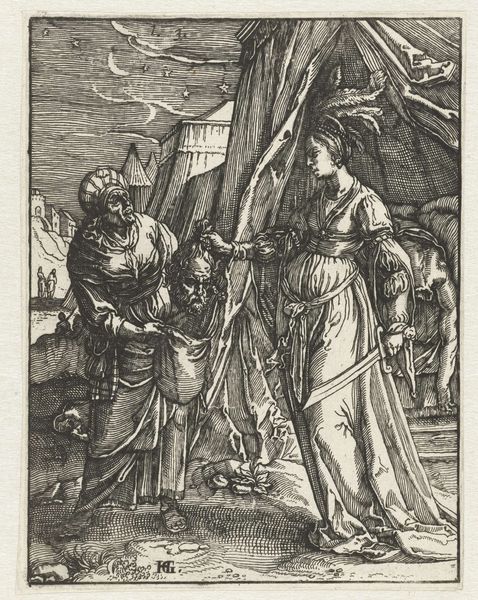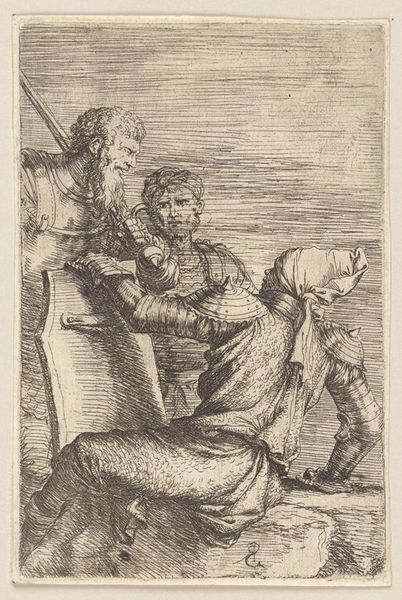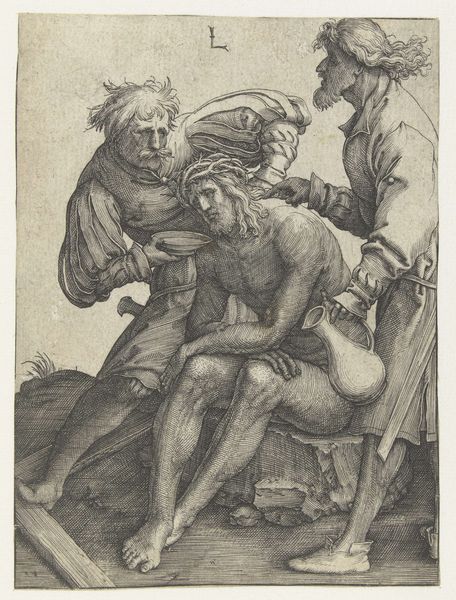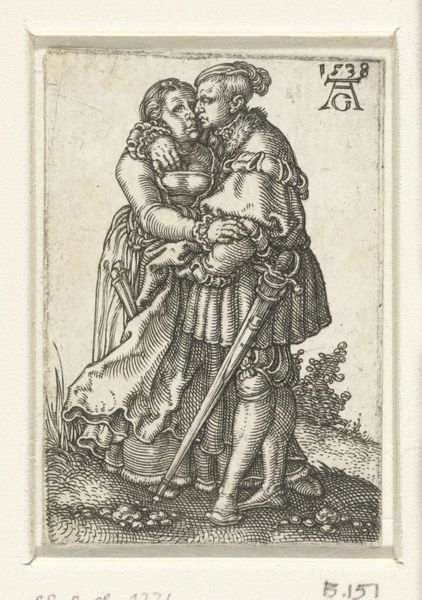
print, engraving
#
portrait
# print
#
figuration
#
genre-painting
#
northern-renaissance
#
engraving
Dimensions: height 78 mm, width 51 mm
Copyright: Rijks Museum: Open Domain
Curator: Right, let's talk about Sebald Beham's "Boeren liefdespaar," a captivating engraving from 1521 here at the Rijksmuseum. A "peasants’ love couple", which gives away what is in front of us. What springs to mind for you with this artwork? Editor: My first thought? An anxiousness. All those tightly packed lines create a tension, like something is about to break. There's a dark humour that bubbles beneath the surface of this so called loving peasant couple. Curator: An interesting perspective. It certainly dives headfirst into the genre scenes that were gaining traction during the Northern Renaissance. The subject isn't some highfalutin mythological tale. Beham's capturing a slice of life. And his life. Because it contains also an engraving from Beham after a Dürer. Editor: Well, if we look at it technically, Beham's masterful control of the engraving tools really shines through. Think about the socio-economic status involved! Each cut on the plate, each line adding value, a laborious task. Engraving as a skilled trade. It wasn't about virtuosity as much it was about getting the picture out as multiple, repeatable commodity. What´s more, Dürer had set up in the recent past his printing studio which makes the comparison not only from the motif sides very attractive. Curator: The line work does give the couple a tangible weight, yet in some sense Beham also lightens it, or at least brings in an air of realism and rawness through this focus on material and medium, doesn't he? How many other of our contemporaries, or the couple’s contemporaries, would´ve portrayed the poor doing anything at all that might approach the courtly notion of "love"? Instead, they look at one another suspiciously. Even he. Editor: And consider the circulation of these prints, this technology changed social perception. Prints like these were relatively accessible compared to paintings. Spreading images and ideas, leveling social classes by the mode of consumption. And perhaps, this “unease” is on purpose. To the couple to get to work at their crafts, maybe? Curator: Or get rid of the big knife the man has by his side! I like your read of "unease." It strikes me as more poignant when looking at it now, thinking of everything this period represents through artistic form: new art-making possibilities, class critique. I think this makes this quite simple print unexpectedly…human. Editor: Exactly! The work moves between skill and social standing, all tied to materiality, which gives it such surprising impact.
Comments
No comments
Be the first to comment and join the conversation on the ultimate creative platform.
